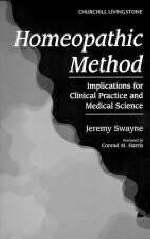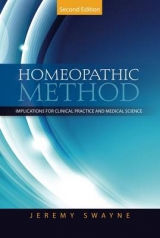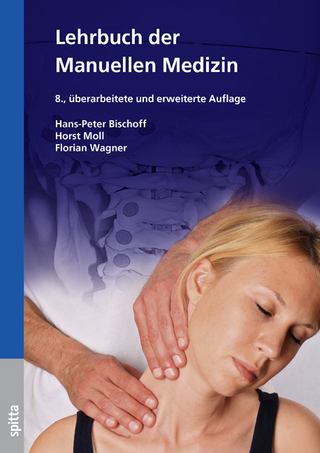
The Homeopathic Method
Churchill Livingstone (Verlag)
978-0-443-05926-1 (ISBN)
- Titel erscheint in neuer Auflage
- Artikel merken
This is a 'how to' book for trainee and newly qualified homoeopaths. It aims to teach clinical method to students of homoeopathy up to the level at which doctors would be prepared to take the MFHom exam of the Faculty of Homoeopathy (the UK organisation of medically qualified homoeopaths). Once they have passed that exam the doctor can proceed to specialist homoeopathic practice. It will also inform the practice of doctors who take shorter courses, eg the introductory weekend course offered by the Faculty, or any international teaching body. The solution this book will provide for medical students of homoeopathy is to bridge the gap between their normal medical practice (questions asked, diagnosis made) and the approach needed to reach a conclusion which suggests a homoeopathic remedy. It takes the reader through the process of broadening their analysis and routes of enquiry to include the base of what they know medically and adding the homoeopathic perspective which will enrich their practice. Instead of focusing on the history, philosophy and materia medica of homoeopathy, the text refers to these topics as illustrations of its main themes ie 'This patient is suffering from...therefore the most appropriate homoeopathic remedy is.
..'. Features: * A patient focused, practical guide for the medically qualified student homoeopath and recently qualified homoeopath * Clearly structured lead into real practice in homoeopathy - not a theoretical explanation of concepts * A key text for any healthcare practitioner seeking to move into serious study of homoeopathic medicine * Shows how clinical method in homoeopathy can enrich the approach to clinical method in medicine in general
SECTION 1 CLINICAL METHOD in HOMEOPATHY and ITS GENERAL RELEVANCE in MEDICINE: the Phenomenon of Illness and the Homeopathic Approach. Homeopathy, Natural Healing and Placebo. Clinical Method. The Attraction of the Homeopathic Method. The Importance of Natural History. Natural History, Pathography and Research. The Holistic Value of Natural History. Thomas Sydenham. The Natural History of Healing SECTION 2 the BASIC PRINCIPLES of HOMEOPATHY: Similarity. Versatility and Specificity . Individuality. The Clinical Picture. Symptomatology. Sensitivity and Receptivity. Susceptibility and Aetiology. Therapeutic Response SECTION 3 GENERAL ISSUES of MANAGEMENT: the Use and Value of Time. Attentiveness. An Eclectic Approach to Illness. The Consultation. Introducing Homeopathy. The Nature of Homeopathy. The Scope of Homeopathy: Reasonable Expectations. Time-Scale. Follow-Up and Change. Outcome. The Healing Process. Hard Work SECTION 4 CASE TAKING: Shifting Our Point of View. Referral and Communication. Observation. Spontaneity. Language and Meaning. Enquiry and the Structure of Case Notes. Examination. Case Notes and Case Analysis. Electronic Patient Records. Perspectives. Conclusion SECTION 5 SYMPTOMS: the Individuality of Symptoms. Modalities. Types of Symptom. The Totality of Symptoms. Selecting and Evaluating Symptoms. Grading of Symptoms. Recurring Themes. Symptoms from the Past. Symptoms that Do Not Fit SECTION 6 CONSTITUTION: the Concept of Constitution. Constitution in Homeopathy. Relationship Between Constitution and Symptoms. Distinguishing Between the Clinical and Constitutional Pictures. Treating the Vulnerable Constitution. Is There Always a Constitutional Picture? /Does the Constitution Change with Time?. Constitutional and Clinical Caricatures. Morphological Types. Constitution and Terrain. The Conventional View of Constitution SECTION 7 AETIOLOGY: Never Well Since. Aetiological Prescribing. Histori Cal Patterns. Onset. Infection. Immunization. Allergy. Iatrogenic Reactions. Physical Trauma. Psychological Trauma and Deprivation SECTION 8 WHEN to USE HOMEOPATHY?: Clinical Setting and Levels of Expertise. Potential. Limitations. The Supportive Role. Combining Homeopathy and Conventional Medication. First Choice Homeopathy. Boundaries of Competence. Difficult Cases and Difficult Patients SECTION 9 TREATMENT STRATEGY: Strategic Options. Permutations. Prevention and Prophylaxis. Acute Illness. Chronic and Persistent Illness. Treatment Strategy and Clinical Strategy. Single and Multiple Prescriptions. Expectations. Conclusions SECTION 10 the RESPONSE to the PRESCRIPTION: Proving. Aggravation. Sleepiness. Getting Better. Well-Being. Constitutional Change. No Change. Intercurrent Events. The Sequence of Events and the Multiplicity of Change. Time-Scale. The 'Laws of Cure', the Director of Cure. Return of Old Symptoms. Elimination. New Symptoms. Getting Worse. Developing the Regime. Conclusion SECTION 11 IMPLICATIONS: Challenges. Overview. Pathography and Holography. Placebo. What if It Is? What if It Isn't?. Specific and Non-Specific Effects. When Is Non-Specific Specific?. Different Stimulus, Same Effect?. Disease Processes. Total Pathography. Healing Processes. Once Proven. Conclusion
| Vorwort | Conrad Harris |
|---|---|
| Zusatzinfo | 30 ills. |
| Verlagsort | London |
| Sprache | englisch |
| Maße | 140 x 216 mm |
| Gewicht | 345 g |
| Themenwelt | Medizin / Pharmazie ► Naturheilkunde |
| ISBN-10 | 0-443-05926-8 / 0443059268 |
| ISBN-13 | 978-0-443-05926-1 / 9780443059261 |
| Zustand | Neuware |
| Haben Sie eine Frage zum Produkt? |
aus dem Bereich



